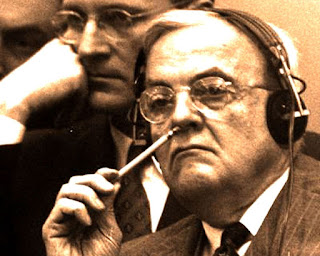You've heard quite a lot about how starting pitching is akin to a endangered species, what with terms such as "opener" and "bullpen days" being bandied about over the past few years.
Of course, "starting pitching" can never disappear from baseball, no matter how embattled those individuals may be, since a baseball game simply has to have someone take the mound in the first inning. (Unless they abolish the first inning, of course--and let's not give Rob Manfred any more cockamamie ideas: he already has enough for several lifetimes.)
But clearly something is happening to starting pitching--or, at least to starting pitchers--thanks to more of that "neo-sabermetric innovation" that has produced a series of distorted strategies via a cascade of domino effects that would have made John Foster Dulles a happy camper.
Our task here: to document the recent changes in starting pitcher performance as manifested by a simple measure--the number of innings they are allowed to throw in any given game. We present data from the 2010-19 decade, along with the same numbers for 2020 and 2021.
This is the time frame in which the complete game went the way of the dodo bird, so you'll note that we lump games started (GS) into a catch-all category where the starter goes six or more innings. When we follow that number across the time frame, we notice that the total has dropped from being nearly two-thirds of all games down to just over one-third of all games.
You'll note that these tendencies, as measured in all of the breakouts shown above, are distorted by the pandemic-plagued 2020 season, which imposed extreme variants of "pitcher ecology" into the mix. In 2021, there is bounce-back in the "6+ IP GS" data, and it is enough of a recovery that we might expect it to continue in 2022 despite the widespread application of "two times through the batting order" stricture that is strangling discourse of late.
Note that the percentage of pitchers getting into but not completing the sixth inning (as shown in the row summarizing the "5-5.67 IP GS) has seen a more incremental rise over the period.
One figure we probably should've put into the chart is the sum of the top rows, to show how many starting pitchers still make it into the sixth inning, since it's a measure that shows more of what the true impact of such strategic behavior produces. That number doesn't dip below 80% until 2016 (79%), but in the "thrust-counterthrust" of the launch-angle explosion in 2017-19 drops down to 71% in 2019. In 2020 starters were coddled due to the uncertainties that existed due to the long layoff between spring training and the start of the season, resulting in a drop below 60%, which in 2021 snapped back up to 66%.
And, finally, the new "trend" where the "two times through" mantra has asserted itself: games where the starter goes less than five innings. This is broken out in additional detail to separate games where the pitcher is ineffective (giving up 3 or more earned runs in the outing) with those where the pitcher is most likely being removed in lockstep with the "two times through" dictum.
The data shows that short starts have more than doubled since 2010, but that it didn't start to become a noticeable "two times through" phenomenon until 2018, when it began to be employed in response to the launch-angle explosion. That number spiked in 2020 and has resulted in the terminology associated with the practice becoming almost unbearably ubiquitous. It may be good news that those numbers subsided in 2021, but the numbers are still much higher than they were, even in 2017-18.
Shorter and ineffective starts have increased incrementally since 2010, but it's easy for us to forget that run scoring levels in 2010-15 dipped down to levels often well below 4.5 runs/game, which seems to be baseball's unspoken Maginot line (witness the widespread squawking about "anemic offense" early in the 2021 season when run scoring was under 4.5 runs/game, albeit accompanied with startlingly low batting averages).
Overall, the use of short but effective starts has tripled since 2010, with the number really going through the roof in 2019 (in what must have been a response to the most egregious point in the launch-angle explosion).
We'll want to track the <5 IP starts in '22 (assuming, of course, that there actually is a '22 season: Manfred and his merry band of robber barons are hard at work following their mentor Dulles with a "brinksmanship" variant of labor negotiations that is apparently a plutocrat's wet dream) as that will tell us if an increase in starting pitcher effectiveness will drive down the knee-jerk application of the "two times through" mantra.
A bit later we'll return to this data, looking at it at the team level, to see if this approach is confined to a few teams, or if it actually is as widespread as the media folks would have you believe. Stay tuned...









